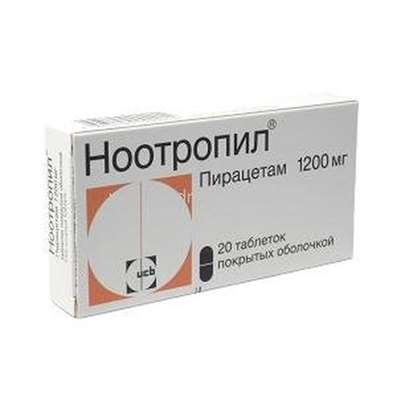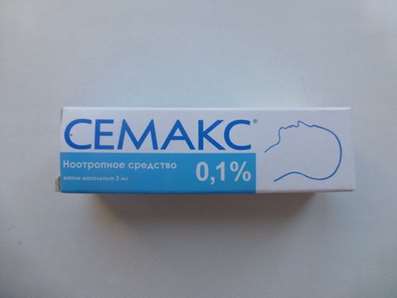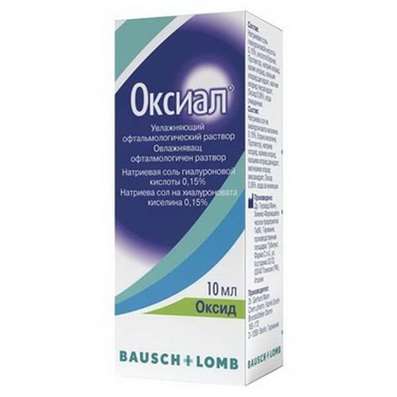Instruction for use: Phenazepam (Phenazepamum)
I want this, give me price
Trade name of the drug – Phenazepam
Active substance: Bromdihydro-chlorphenyl-benzodiazepine (Bromdihydro-chlorphenyl-benzodiazepinum)
Chemical rational name: 7-Bromo-5- (2-chlorophenyl) -1,3-dihydro-2H-1,4-benzodiazepin-2-one
Dosage Form: tablets
Compositionactive substance:
Bromdihydro-chlorphenyl-benzodiazepine - P(based on 100% basis) 0.5 mg/ 1 mg/ 2.5 mg
Excipients: lactose (milk sugar); potato starch; Povidone (Kollidon 25); calcium stearate; talc
Description of Phenazepam
Tablets are white, flat-cylindrical, with a facet. Anxiolytic of Group Benzodiazepines.
Pharmacotherapeutic group: Anxiolytic (tranquilizer)
ATX Code
N05BX Anxiolytics other
The nosological classification (ICD-10)
F06.6 Organic emotionally labile [asthenic] disorder: Asthenic disorders; Asthenic conditions; Asthenic violation; Asthenic disorders; Asthenic conditions; Asthenic phenomenon; Asthenovegetative violation; Asthenic-depressive disorder; Asthenoneurotic state; Asthenic-depressive disorder; Asthenic-depressive state; Asthenic-hypochondriac phenomena; Asthenoneurotic disorder; Hypochondriacal and asthenic-hypochondriac state; Organic asthenic-depressive disorder; Psycho-asthenic disorders.
F29 Inorganic psychosis Unspecified: Hallucinatory-delusional disorders; Hallucinatory-delusional syndrome; substance-induced psychosis; Manic-delusional disorders; Manic chronic psychosis; Manic psychosis; Acute psychosis; paranoid psychosis; Paranoid psychosis; Subacute psychosis; presenile psychosis; Psychosis; Psychosis intoxication; paranoid psychosis; Psychosis in Children; Childhood Psychosis; Psychomotor agitation in psychosis; Reactive psychosis; Chronic psychoses; Chronic hallucinatory psychosis; Chronic psychosis; Chronic Psychotic Disorder; schizophrenic psychosis.
F40 Phobic anxiety disorders: Obsessive fears; Anxiety neurosis; anxiety neurosis; Night terrors; Acute Anxiety Disorder; Syndrome of paroxysmal fear; state of fear; Fear; Phobias; phobic disorders; Phobia; Feeling of fear.
F40.9 Phobic anxiety disorder, unspecified: Obsessive fear; Anxiety neurosis; Neurosis of anxiety; Acute anxiety disorder; Syndrome of paroxysmal fear; State of fear; Phobias; Phobic disorders; Feeling of fear
F41 Other anxiety disorders: anxiety Relief; Nonpsychotic anxiety disorders; An alarm condition; Anxiety; Disturbingly suspicious condition; Chronic anxiety; Sense of anxiety.
F41.9 Anxiety disorder, unspecified: Severe anxiety; neurosis-like symptoms; neurosis-like disorder; neurosis-like state; Neurosis with anxiety symptoms; Neurosis with anxiety; Neurotic disorders with anxiety syndrome; The acute situational stress and anxiety; The acute situational stress anxiety; Acute anxiety attack; Depressed mood with anxiety elements; Psychopathy with a predominance of anxiety and worry; Sudden anxiety; Situational Anxiety Disorder; An anxiety condition; Soest; Anxious-delirium; Disturbingly delusional component; anxiety; Anxiety; anxiety disorder; Anxiety disorders; Anxiety disorders in neurotic and neurosis-like states; Anxiety syndrome; Chronic neurotic anxiety; Sense of anxiety.
F45 Somatoform disorders: Psychosomatic diseases; Psychosomatic disorders; Psychosomatic disorders; anxiety states with somatic diseases; Functional psychosomatic disorders of the cardiovascular system.
F45.2 Hypochondriacal disorder: Asthenic-hypochondriac phenomena; Hypochondriacal-senesto-pathic syndrome; hypochondriacal disorder; hypochondriacal neurosis; Hypochondriacal and asthenic-hypochondriac state; Hypochondria; Senesto-hypochondriacal disorders; Senesto-hypochondriacal disorder.
F48 Other neurotic disorders: Neurosis; Neurological diseases; Neurotic disorders; Neurotic state; Psychoneurosis; Anxious-neurotic state; Chronic neurotic disorders; Emotional reactive disorder.
F48.0 Neurasthenia: Asthenic form of neurasthenia; Asthenoneurotic state; asthenoneurotic disorder; Influenza young workaholics; Flu of yuppie; neurotic disorders; neurasthenic state; neurasthenic syndrome.
F48.9 Neurotic disorder, unspecified: Secondary neurotic symptom; Other neurotic state; Neurosis; Neurosis with increased irritability; Neuroses; Neuroses of all kinds; Neuroses with inhibition; neuroses of the heart; Neurotic disorders in alcoholism; Neurotic disorders with inhibition; Neurotic disorders with anxiety syndrome; Neurotic reactions; Neurotic symptoms of alcoholism; Neurotic state; The neurotic syndrome; neurotic disorders; The attack of neurological dysfunction; School neurosis; Emotional stress.
F51.0 Insomnia inorganic etiology: Situational insomnia.
F60.2 antisocial personality disorder: The antisocial personality; Psychopathic personality; Psychopathy; Psychopathy excitable type; Psychopathy and psychopathic state; Psychopathy hysterical type; Psychopathy with a predominance of anxiety and worry; Inhibited personality.
F60.3 Emotionally unstable personality disorder: Mood changes; mood variability; mood lability; Mood disorders; Mood disorders; Instability emotional background; mood swings; Psychic lability; mood disorders; Mixed emotional disorders, depressed mood; Status of emotional stress; The deterioration of sentiment; Emotional lability; Emotional tension; Emotional instability; Emotional instability; Emotional shut off; Emotional detachment.
F95 Tics: Children tick; Nervous tics in children.
G25.9 Extrapyramidal and movement disorder, unspecified: bradykinesia; Restlessness; Movement disorders; Meiji syndrome; Muscle rigidity Muscle spasticity; Muscle tension; Pyramidal disorder; The defeat of the pyramidal tract; The rigidity of the muscles; Extrapyramidal syndrome; Spastic paralysis; Extrapyramidal hyperkinesia.
G40 Epilepsy: Atypical seizures; atonic seizures; Large seizures; Large seizures in children; Large seizures; generalized absence seizures; Jacksonian epilepsy; Diffuse large seizure; diencephalic epilepsy; Cortical and non-convulsive forms of epilepsy; Primary generalized seizures; Primary generalized seizures; Primary generalized seizure; Primary generalized tonic-clonic seizure; Piknoleptic absence; Repeated seizures; Fit generalized; Fit convulsive; Refractory epilepsy in children; Sophisticated seizures; Mixed seizures; Mixed forms of epilepsy; convulsive states; seizures; Spasmodic state; Convulsive forms of epilepsy; Epilepsy grand mal; seizures.
G40.0 localized (focal) (partial) idiopathic epilepsy and epileptic syndromes with seizures with focal beginning: Temporal lobe epilepsy; Temporal seizures; The partial form of epilepsy; Partial epilepsy; Partial seizures; Partial seizures; Partial seizures; The partial tonic-clonic seizure; Partial seizure; The partial epileptic seizure; Focal epilepsy; Partial seizures; Focal seizures; Partial seizures.
G40.8 Other specified forms of epilepsy: Alcohol epilepsy; Local forms of epilepsy; Myoclonic epilepsy; Myoclonus epilepsy; Juvenile myoclonic epilepsy.
G47.0 Disorders of falling asleep and maintaining sleep [insomnia]: Insomnia; Insomnia, especially difficulty falling asleep; desynchronosis; Prolonged sleep disturbance; Difficulty falling asleep; Short-term and transient insomnia; Short-term and chronic sleep disorders; Short or shallow sleep; Violation of sleep; Disturbed sleep, especially in the phase of falling asleep; Infringements sleep; sleep disturbances; Neurotic sleep disturbance; Shallow superficial sleep; shallow sleep; Poor quality of sleep; Night awakening; sleep Pathology; Postsomnic violation; transient insomnia; Trouble falling asleep; Early awakening; Early morning awakening; Early awakening; sleep disorder; somnipathy; persistent insomnia; difficult to fall asleep; difficulty falling asleep; Difficulty falling asleep in children; persistent insomnia; Worsening sleep; Chronic insomnia; Frequent night and / or early morning awakening; Frequent nocturnal awakening and a sense of the depth of the non-sleep; Night waking.
G90 Disorders of autonomic [autonomous] nervous system: angiodystonia; vasovegetative manifestations; vasomotor dystonia; vegetative dystonia; autonomic dysfunction; vegetative lability; Vegetative-vascular disorders; autonomic dysfunction; Vegetative-vascular dystonia; Vegetative-vascular disorders; vasoneurosis; vegetative-vascular disorders; Dystonia vegetovascular; Dystonia neurocirculatory; neuro disorder; Cardiopsychoneurosis; Neurocirculatory dystonia of hypertensive type; Primary neurovegetative syndrome; The syndrome of vegetative dystonia.
R25.8.0 * hyperkinesia: hyperkinesia rheumatoid; hyperkinesia trochaic; Hyperkinesia central origin; hyperkinesia; Social tremor.
R45.0 Nervousness: Internal voltage; Voltage; voltage nervous; tension; nervous disorders; tearfulness; Mental stress; emotional stress; Psycho-emotional tension in stressful situations; The reactions of nervous tension; State voltage; State of tension; Condition of permanent mental stress; stress; The feeling of inner tension; Emotional tension.
R45.4 Irritability and anger: tantrum; Anger; Dysphoria; Neurosis with increased irritability; exasperation; Increased irritability; Increased irritability of the nervous system; Irritability; Irritability with nervousness; Irritability with psychotic disorders; The symptoms of irritability.
Pharmacological Properties of PhenazepamPharmachologic effect
Mode of action - an anticonvulsant, anxiolytic, muscle relaxant, hypnotic, sedative.
Pharmacodynamics
Anxiolytic (tranquilizer) benzodiazepine. It has anxiolytic, sedative-hypnotic, anticonvulsant and central muscle relaxant effect.
It increases the inhibitory effect of GABA in the transmission of nerve impulses. It stimulates benzodiazepine receptors located in the allosteric center of postsynaptic GABA receptors ascending activating reticular formation of the brain stem; reduces the excitability of the subcortical structures of the brain (the limbic system, thalamus, hypothalamus), polisinapticheskie inhibits spinal reflexes.
The anxiolytic effect is due to the influence on the amygdala of the limbic system and manifests itself in the reduction of emotional stress, easing anxiety, fear, anxiety.
Sedation due to the influence on the reticular formation of the brain stem and the nonspecific thalamic nuclei and manifested a decrease in symptoms of neurotic origin.
On the productive psychotic symptoms genesis (acute delusional, hallucinatory, affective disorders) has practically no effect, it is rarely observed decrease in affective intensity, delusional disorders.
Hypnotic effects associated with inhibition of the cells of the reticular formation of the brain. Reduces emotional effects, autonomic and motor stimuli that disturb sleep.
Anticonvulsant action is realized by increasing presynaptic inhibition suppresses the spread of seizure pulse, but does not eliminate the excited state of the hearth.
Central muscle relaxant effect is due to inhibition of polysynaptic spinal afferent inhibitory ways (to a lesser extent - and monosynaptic). Perhaps, and direct inhibition of motor nerve and muscle function.
Pharmacokinetics
After oral administration, is well absorbed from the gastrointestinal tract, Tmax plasma -. 1-2 hours is metabolized in the liver. T1 / 2 - 6.10.18 hours.
Extract mainly by kidneys as metabolites.
Indications for Phenazepam
- neurotic, neurosis, psychotic, psychopathic and other conditions accompanied by anxiety, fear, increased irritability, tension, and emotional lability;
- reactive psychosis and hypochondriacal-senestopatichesky syndrome (including resistant to the action of other tranquilizers);
- autonomic dysfunction and sleep disorders;
- prophylaxis of conditions of fear and emotional stress;
- temporal and myoclonic epilepsy (as an anticonvulsant);
- treatment of hyperkinesis and tics, muscle rigidity, autonomic lability.
Contraindications for Phenazepam
- hypersensitivity (including other benzodiazepines);
- coma;
- shock;
- myasthenia gravis;
- angle-closure glaucoma (acute onset or predisposition);
- acute alcohol poisoning (with the weakening of vital functions), narcotic analgesics and hypnotics;
- Severe COPD (possibly increasing respiratory failure);
- acute respiratory failure;
- severe depression (suicidal tendencies may emerge);
- pregnancy (I term); lactation;
- childhood and adolescence to 18 years (the safety and effectiveness are not determined).
Phenazepam Dosage and Administration
Inside.
When sleep disorders - 0.5 mg for 20-30 minutes before bedtime.
For the treatment of neurotic, psychopathic, neurosis and psychopathy-like states initial dose - 0.5-1 mg 2-3 times a day. After 2-4 days in view of efficacy and tolerability, the dose can be increased to 6.4 mg / day.
In severe agitation, fear, anxiety, treatment is initiated with a dose of 3 mg / day, quickly increasing the dose to produce a therapeutic effect.
In the treatment of epilepsy - 2.10 mg / day.
For the treatment of alcohol withdrawal - 2-5 mg / day.
The average daily dose - 1.5-5 mg, it is separated into 2-3 doses, usually 0.5-1 mg in the morning and afternoon, and 2.5 mg at night. In neurological practice for diseases with muscle hypertonicity appoint 2-3 mg 1-2 times a day.
The maximum daily dose - 10 mg.
In order to avoid the development of drug dependence at course treatment duration fenazepama application is 2 weeks (in some cases the duration of treatment can be increased up to 2 months). If you cancel Phenazepam reduce the dose gradually.
Side effect of Phenazepam
From the central and peripheral nervous system: at the beginning of treatment (particularly in elderly patients) - drowsiness, fatigue, dizziness, decreased ability to concentrate, ataxia, disorientation, unsteady gait, slowing of mental and motor reactions, confusion; rarely - headache, euphoria, depression, tremors, loss of memory, impaired motor coordination (particularly at high doses), depressed mood, dystonic extrapyramidal reactions (uncontrolled movements, including the eyes), fatigue, muscle weakness, dysarthria, epileptic seizures (epilepsy patients); very rarely - paradoxical reaction (aggressive outbursts, agitation, anxiety, suicidal tendencies, muscle spasms, hallucinations, agitation, irritability, anxiety, insomnia).
From the side of hematopoiesis: leukopenia, neutropenia, agranulocytosis (chills, pyrexia, sore throat, extreme tiredness or weakness), anemia, thrombocytopenia.
From the digestive system: dry mouth or salivation, heartburn, nausea, vomiting, loss of appetite, constipation or diarrhea; abnormal liver function, increased activity of hepatic transaminases and alkaline phosphatase, jaundice.
From the urogenital system: urinary incontinence, urinary retention, renal dysfunction, decreased or increased libido, dysmenorrhea.
Allergic reactions: skin rash, pruritus.
Other: addiction, drug dependency, lowering blood pressure; rarely - blurred vision (diplopia), weight loss, tachycardia.
With a sharp decrease in dose or discontinuation - withdrawal symptoms (irritability, nervousness, sleep disturbances, dysphoria, a spasm of smooth muscles of internal organs and skeletal muscles, depersonalization, increased sweating, depression, nausea, vomiting, tremor, perception disorders, including hyperacusis, paresthesia, photophobia, tachycardia, seizures, rare - acute psychosis).
Pregnancy and breast-feeding
In pregnancy, the use is possible only for health reasons. It has a toxic effect on the fetus and increases the incidence of birth defects when used in the I trimester of pregnancy. Reception at therapeutic doses in later stages of pregnancy can cause CNS depression in the neonate. The constant use during pregnancy may lead to physical dependence with the development of withdrawal symptoms in the newborn. Children (especially at a younger age) are very sensitive to the depressant action of benzodiazepines.
Application just before birth or during labor may cause neonatal respiratory depression, decreased muscle tone, hypotension, hypothermia and a weak act of sucking (flaccid baby syndrome).
Overdose of Phenazepam
Symptoms: marked depression of consciousness, cardiac and respiratory activity, severe drowsiness, prolonged confusion, decreased reflexes, prolonged dysarthria, nystagmus, tremor, bradycardia, dyspnea or shortness of breath, decreased blood pressure, coma.
Treatment: gastric lavage, the appointment of activated carbon, the control of vital functions, maintaining respiratory and cardiovascular activity, symptomatic therapy. Hemodialysis is ineffective.
Specific antagonist - flumazenil (in a hospital) / in 0.2 mg if necessary - up to 1 mg of 5% glucose solution or 0.9% sodium chloride solution.
Interaction
In an application Phenazepam reduces the effectiveness of levodopa in patients with Parkinson's disease.
Phenazepam may increase the toxicity of zidovudine.
There mutual enhancement effect, while the use of antipsychotic, antiepileptic, or hypnotic drugs, as well as central muscle relaxants, narcotic analgesics, ethanol.
Inhibitors of microsomal oxidation increase the risk of toxic effects. Inductors microsomal liver enzymes decrease the efficiency.
Increasing the concentration of imipramine in blood serum.
In an application with antihypertensive drugs may increase antihypertensive action.
Against the background of the simultaneous appointment of clozapine may increase the respiratory depression.
SPECIAL INSTRUCTIONS for Phenazepam
In renal and / or hepatic failure and long-term treatment is necessary to control the picture of peripheral blood and liver enzymes.
In patients not previously treated with psychoactive drugs, therapeutic response is observed in the application of Fenazepama® at lower doses, compared with patients taking antidepressants, anxiolytics or suffering from alcoholism.
Like other benzodiazepines, it has the ability to cause drug dependency chronic administration in large doses (up to 4 mg / day). In a sudden discontinuation may experience withdrawal symptoms (including depression, irritability, insomnia, increased sweating), especially after long-term use (8-12 weeks). If you have patients with such unusual reactions, as increased aggressiveness, acute state of excitement, anxiety, suicidal thoughts, hallucinations, increased muscle cramps, difficulty falling asleep, sleep surface, treatment should be discontinued.
In the treatment of patients is strictly prohibited the use of ethanol.
The efficacy and safety of the drug in patients younger than 18 years have not been established.
Effects on ability to drive vehicles and management mechanisms. During the period of treatment must be careful when driving and occupation of other potentially hazardous activities that require high concentration and psychomotor speed reactions.
Release form of Phenazepam
Tablets, 0.5 mg, 1 mg and 2.5 mg. At 10 or 25 pieces. in contour cell packages from PVC film and aluminum foil printed patent. 50 pcs. banks with plastic covers the first opening control. 5 packs of 10 pieces. or 2 packs of 25 pcs., or 1 jar placed in a stack of cardboard.
Storage conditions of Phenazepam
In a dry, dark place at a temperature no higher than 25 ° C.
Keep out of the reach of children.
Shelf life of Phenazepam
3 years.
Do not use beyond the expiration date printed on the package.
Conditions of supply of Phenazepam from pharmacies
On prescription.

 Cart
Cart





